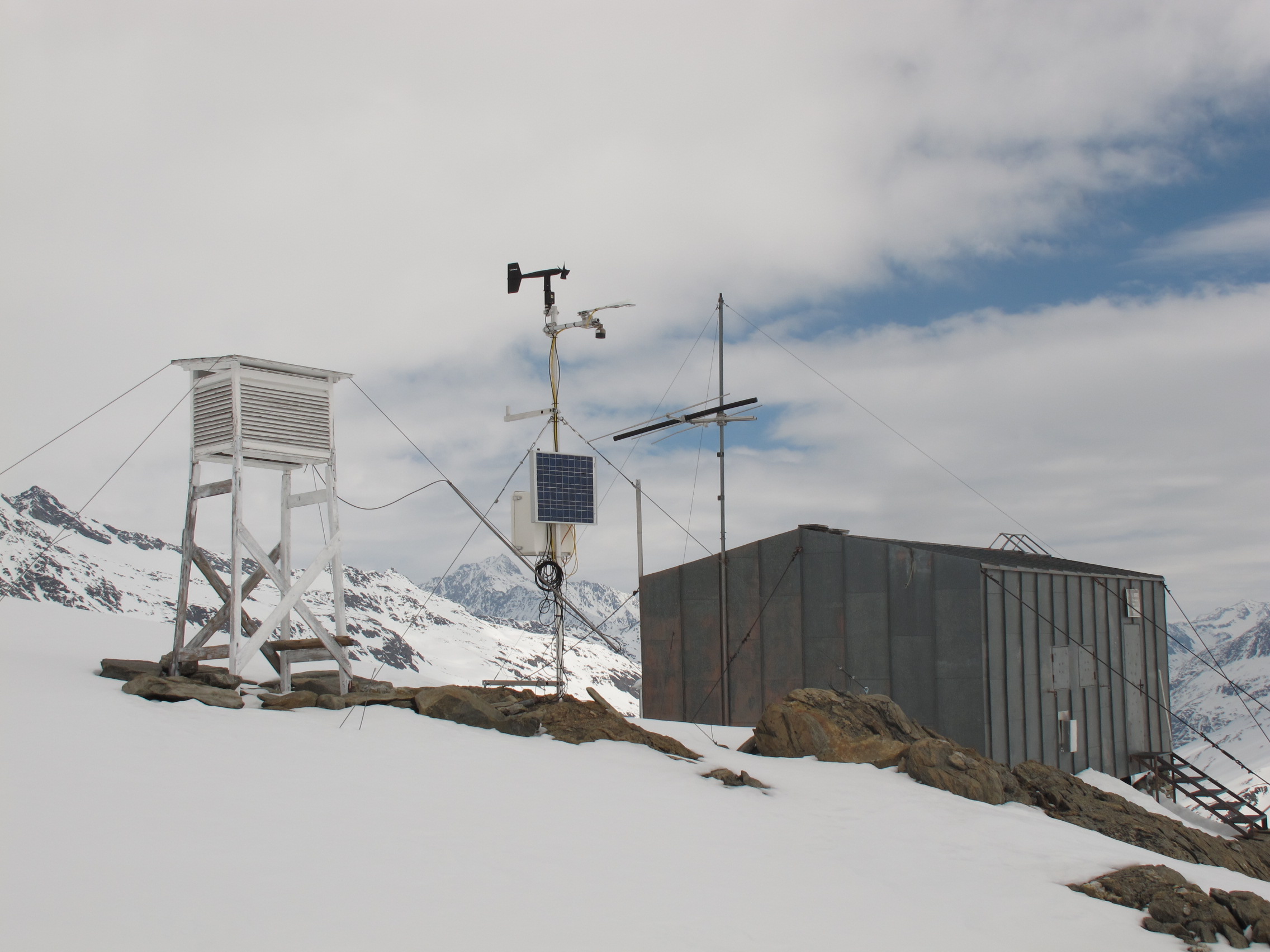Station Hintereis
Address
Station manager
Rainer PrinzE-mail: rainer.prinz@uibk.ac.at
Contact Station
E-mail: rainer.prinz@uibk.ac.athttps://www.uibk.ac.at/projects/station-hintereis-opal-data/index.html.en
Station Features
Opening year: 1966 Status: OpenStation name and owner
Station Hintereis (STHE) is situated near Hintereisferner (HEF) in the catchment of the Rofen Valley. The Department of Atmospheric and Cryospheric Sciences, University of Innsbruck (ACINN) runs the station which is built on land owned by the Austrian Governmental Forestry Administration.
Location
The STHE is situated 200 m from the 1970s mean equilibrium line of HEF, an approximately 5 km2 valley glacier. HEF is one of several glaciers in the high alpine catchment of Rofenache (Rofen river), Ötztal Alps, Austria, on the border to Italy.
Climate data
Grey colours are WMO Climate Normals including maximum and minimum values. Blue colours are individual years.
Climate data for the stations where extracted via Copernicus Climate Data Store, from the global gridded reanalysis product: ERA5 monthly averaged data on single levels from 1940 to present. Description and source code: Roemer J.K. 2023. https://doi.org/10.5281/zenodo.10214922 Data Source: Hersbach et al. 2023. Copernicus Climate Change Service (C3S) Climate Data Store (CDS), https://doi.org/10.24381/cds.f17050d7
Biodiversity and natural environment
STHE is totally surrounded by alpine glaciers covering peaks as high as almost 3800 m a.s.l. The immediate surroundings of the HEF are characterized by freshly exposed rocks and debris resulting from ongoing glacial retreat. Prominent Little Ice Age moraines dominate the surroundings of the glacier tongue. Due to its high elevation and somehow difficult access, ST-HE is not suitable for studying the lower parts of the Rofen Valley. Main focus is on glaciology and atmospheric studies.
History and facilities
HEF is mentioned in 1601 for the first time and then in 1678, 1774, 1770, 1816 in the context of pro-glacial lake formation and related glacial lake outburst floods. Glacier extent observations began in 1847, and the earliest maps are from 1870, 1888, and 1893, followed by a long series of maps. Research was intensified since the International Geophysical Year and during the International Hydrologica Decade/Program of UNESCI/IHP. HEF has been the key research site for glaciological studies at IMGI ever since. In 1966, SH was built to logistically support the ongoing scientific activities. It accommodates up to eight persons in bunk beds. There is no electricity but gas for cooking, heating, and light.
General research and databases
HEF has one of the longest time series on glacier mass balance for any glaciers on Earth, based on series of geodetic maps starting in the 19th century. Since 2001 1-2 airborne LIDAR surveys are carried out per year for determining ice volume changes. Length changes have been measured annually since 1847, and a mass balance time series dates back to 1953. Complementary studies of ice-atmopshere interactions, ice dynamics, and glacier hydrology has accumulated rich data sets.
Link to data: https://dataportal.eu-interact.org/stations
Station Monitoring
Human dimension
The nearest settlements are Vent in Austria, 15 km from STHE (150 permanent inhabitants, alpine farming and tourism) and Kurzras/Maso Corto and Schnals/Senales in Italy (approximately 10 permanent inhabitants, year-round glacier ski tourism).
Access
STHE is accessed from Innsbruck Airport either by car (2 hours) or train/bus (3 hours) to Vent. From there, it is a 6-7 hours walk to the station (1200 m elvation gain). The Hochjoch Hospiz mountain hut is half way. Glacier crossing is necessary, thus safety equipment and moutaineering experience are mandatory. Helicopter charter is possible but expensive.



